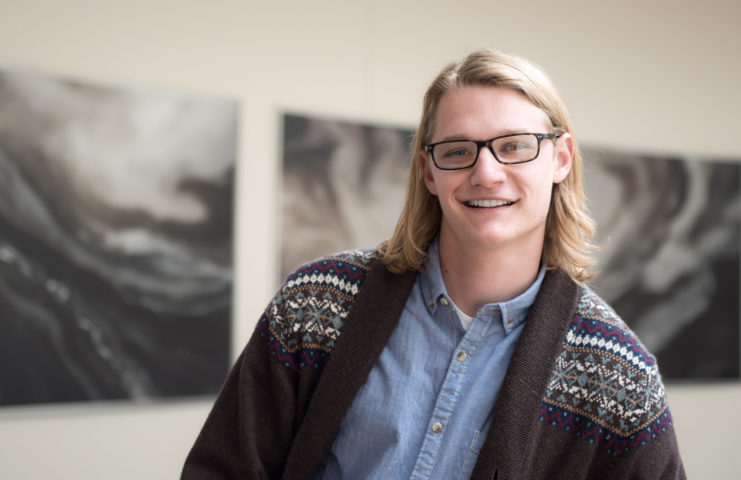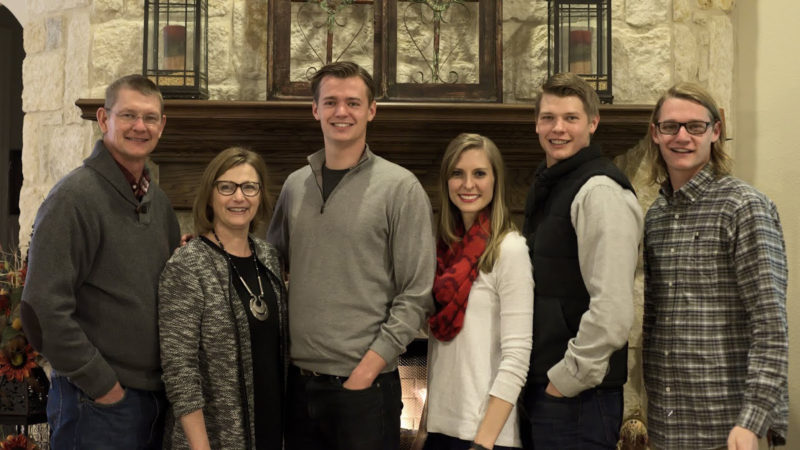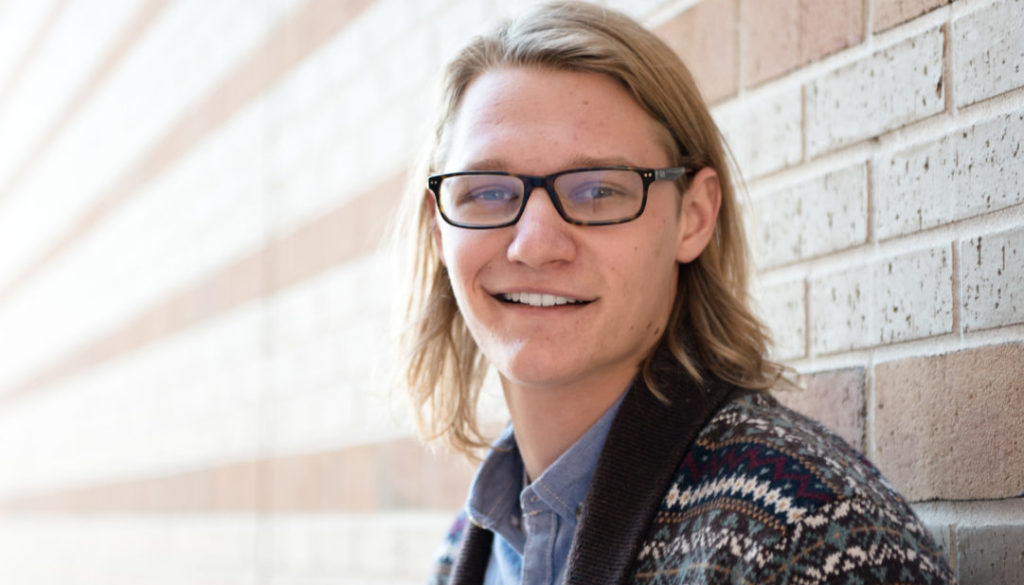Scott Perkins ’17 Carries on Physics Family Tradition at Texas A&M
The Perkins brothers try to keep the conversation casual at family get-togethers, usually sticking to the weather, sports or life in general. But invariably, the small talk will turn into a lively debate on the race to Mars or any number of topical issues in the field of physics.
The subject is a family affair for the three Arlington, Texas, natives. The two older brothers, James “Cory” ’12 and Casey ’14, graduated from Texas A&M University with degrees in physics, and the youngest, Scott ’17, is following in their footsteps as a junior majoring in physics at Texas A&M.
Scott confesses to being the primary instigator of the good-natured sibling banter, but when it comes to academics and maintaining his 4.0 GPA, it’s all joking aside.


“Physics is something we’re all passionate about, and it makes some of the dinner conversations pretty interesting, but I take my studies very seriously,” said Scott, who’s also minoring in astrophysics. “Being a physics major is a big part of my life.”
Last spring, Scott got involved in undergraduate research, working alongside Texas A&M astronomer and George P. and Cynthia Woods Mitchell Institute for Fundamental Physics and Astronomy member Casey Papovich to analyze Hubble Deep Field images in their study of distant galaxies. They used a process called gravitational lensing, a phenomenon that occurs when a distribution of cosmic matter between the source and the observer actually bends light rays as it travels toward the observer in a manner similar to that of a telescope lens. The result is an ability to see farther into space and a closer look at how galaxies evolved through different epochs of the universe.
After Scott’s interest in physics blossomed during a high school AP course, he decided Texas A&M and its seemingly “endless research opportunities” would be the best avenue for him to pursue those interests,
“Personally, I find it really fulfilling to explore the universe around us and to try to understand as much as we can about the world that we live in,” Scott said. “There’s never a shortage of complex questions in this field. It seems like every day, we find a new way to describe the universe, and I just find it all very interesting.”
Watch a brief Q&A with Scott Perkins ’17 in which he explains what he sees as the universal appeal of physics, particularly at Texas A&M:
Scott pushes himself for good reason — pursuit of the unknown as well as the example set by his brothers, who each put their degrees to good use in forging successful careers in industry.
As the oldest, Cory was heavily involved in significant materials science experimentation during his Texas A&M days as an undergraduate research assistant under research scientist Alexandre Kolomenski. He also excelled in the classroom in high school and in college, earning a President’s Endowed Scholarship and nominations for both Marshall and Rhodes scholarships en route to graduating magna cum laude with a minor in electrical engineering and then graduate school at Ohio State University. He currently is a product engineer for Texas Instruments in Dallas.
“Texas A&M Physics prepared me very well for graduate school, and I was able to test out of graduate-level math classes in my first semester of my graduate work at Ohio State,” Cory said.
Casey also took advantage of undergraduate research opportunities while at Texas A&M, assisting physicist Glenn Agnolet in the development of a control program for a piezoelectric motor on a Scanning Tunneling Microscope (STM). Like Cory, Casey immersed himself in his schoolwork and made it a point to have regular one-on-one conversations with many of the department’s esteemed faculty — decisions that not only proved critical in his graduating summa cum laude but also in effectively preparing him for success after college as a radiation effects engineer with Space Exploration Technologies Corporation (SpaceX) in Los Angeles.
“I think the most valuable thing I picked up from physics is the confidence that I can figure out any problem,” Casey said. “I know from experience that I can learn very difficult and muddied concepts if I sit down and put in the work.
“Physics gave me a pretty far-reaching education that laid a pretty good base for a pretty far-reaching career.”
As with many Aggie traditions, this one that produced a trilogy of Texas A&M physicists started at home. The boys’ father, Brad ’83, earned his bachelor’s in applied mathematical sciences and is now a software engineer for L-3 Communications. Their mother, Judi ’85, received her bachelor’s in psychology and now works in the children’s ministry of their church, Lamar Baptist, following her retirement in May after a lengthy career as an elementary teacher within the Arlington Independent School District.
Scott says he can recall from an early age his parents reminiscing about their time in Aggieland. He also admits his brothers’ decision to also enroll at Texas A&M and major in physics made an indelible impression on him, yet he maintains there was never any pressure from his parents nor his brothers to finish out the familial Aggie quintet.
“My family let me make the decision to come here, but there wasn’t much choice in my mind,” Scott said. “Hearing about Texas A&M from my parents and brothers — they just had such great things to say about it. I was very excited to start my career here, and it definitely hasn’t disappointed.”
Scott hasn’t yet decided if he will follow his brothers into industry, given that he’s also considering continuing along the path of academia and earning a Ph.D. Whatever professional path he chooses, Scott says he just wants his work to matter in the grand scheme.
“Being an Aggie means leaving the world better than you found it,” Scott said. “I’m personally very motivated by physics, and I just want to spread that excitement for it by showing others how cool the universe can be.”
While the dinner-table debates are sure to continue, the brothers do achieve consensus on one indisputable Perkins-proven point, fittingly summed up by Scott as the baby of the family.
“Texas A&M has a number of opportunities for undergraduate research which can be hugely helpful,” Scott said. “Not only does it offer those opportunities, it’s required in our degree. But I think that just gives you a really good look at what research in physics actually looks like on a day-to-day basis.”
To learn more about the Department of Physics and Astronomy as well as related degree programs and undergraduate research opportunities, visit http://physics.tamu.edu/.
-aTm-
Contact: Chris Jarvis, (979) 845-7246 or cjarvis@science.tamu.edu
